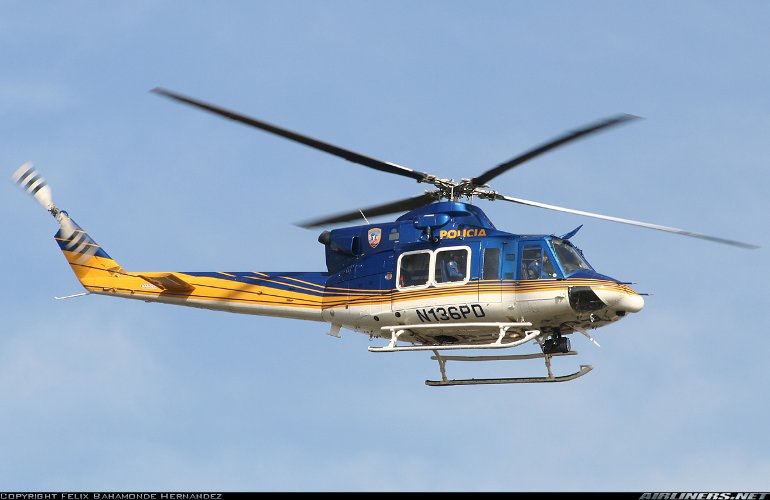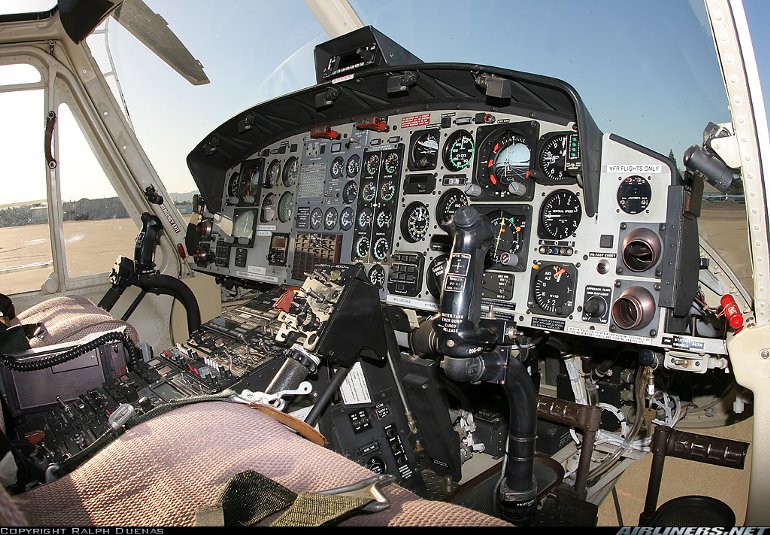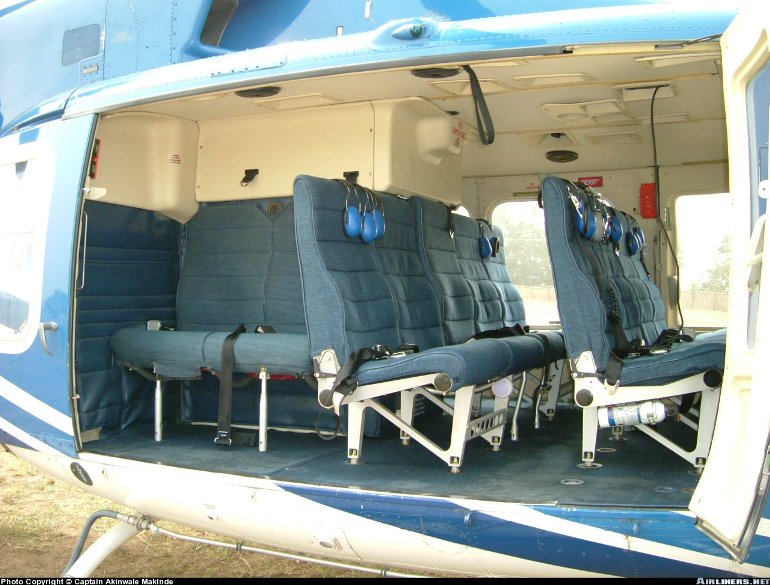Aircraft Technical Data
Bell 412



| Details | |
| Country of Origin | United States of America and Canada |
| Type | Medium lift utility helicopter |
| History | The 412 family is a development of the 212, the major change being an advanced smaller diameter four blade main rotor in place of the 212's two blade unit. Development of the 412 began in the late 1970s and two 212s were converted to the new standard to act as development aircraft for the program. The first of these flew in August 1979, and the 412 was awarded VFR certification in January 1981. That same month the first delivery occurred. Subsequent development led to the 412SP, or Special Performance, with increased fuel capacity, higher takeoff weight and more optional seating arrangements. The 412HP, or High Performance, superseded the 412SP in production in 1991. Features include improved transmission for better hovering performance. The current standard production model is the 412EP, or Enhanced Performance. The 412EP features a PT6T3D engine and a dual digital automatic flight control system fitted as standard, with optional EFIS displays. Fixed tricycle landing gear is optional. Meanwhile in Indonesia, IPTN has a licence to build the 412SP, which it calls the NBell412. IPTN has a licence to build up to 100 NBell412s. Like the 212, the 412 is in widespread use for a number of utility roles, including EMS and oil rig support, its twin engine configuration being an asset, particularly in the latter role. It too is in military service, Canada once again being a major customer (including 100 recently delivered 412EP based CH-146 Griffons). |
| Powerplants | 412 - One 1350kW (1800shp) (derated to 980kW/1308shp for takeoff) Pratt & Whitney Canada PT6T3B Turbo Twin-Pac, consisting of two PT6 turboshafts linked through a combining gearbox, driving a four blade main rotor and two blade tail rotor. 412SP - One 1044kW (1400shp) takeoff rated PT6T3B1 Turbo Twin-Pac. 412HP - One 1342kW (1800shp) takeoff rated PT6T3BE Turbo Twin-Pac. |
| Performance | 412 - Max speed 240km/h (130kt) at sea level, cruising speed 235km/h (127kt). Max range 455km (245nm), or 835km (450nm) with auxiliary tanks. 412SP - Max speed 260km/h (140kt), max cruising speed 230km/h (124kt). Initial rate of climb 1350ft/min. Range with max payload and reserves 695km (374nm), max range with standard fuel 656km (354nm). 412HP - Max cruising speed 230km/h (124kt), long range cruising speed 241km/h (130kt). Range with standard fuel and no reserves 745km (402nm). |
| Weights | 412 - Empty equipped 2753kg (6070lb), max takeoff 5216kg (11,500lb). 412SP - Empty equipped (IFR) 3001kg (6616lb), max takeoff 5397kg (11,900lb). 412HP - Empty equipped (IFR) 3066kg (6759lb), max takeoff 5397kg (11,900lb). |
| Dimensions | Main rotor diameter 14.02m (46ft 0in), fuselage length 12.70m (41ft 9in), height 4.57m (15ft 0in). Main rotor disc area 154.4m2 (1662sq ft). |
| Capacity | Total seating for 15, including one or two pilots. Maximum weight of an external sling load 2040kg (4500lb). |
| Production | Over 420 Bell 412s of all models, civil and military, have been built. Production of the 412 switched to Bell's Canadian plant in February 1989. |
| Related Links | Bell 412 |
The backbone of this section is from the The International Directory of Civil Aircraft by Gerard Frawley and used with permission. To get your own copy of the book click here. |
|








